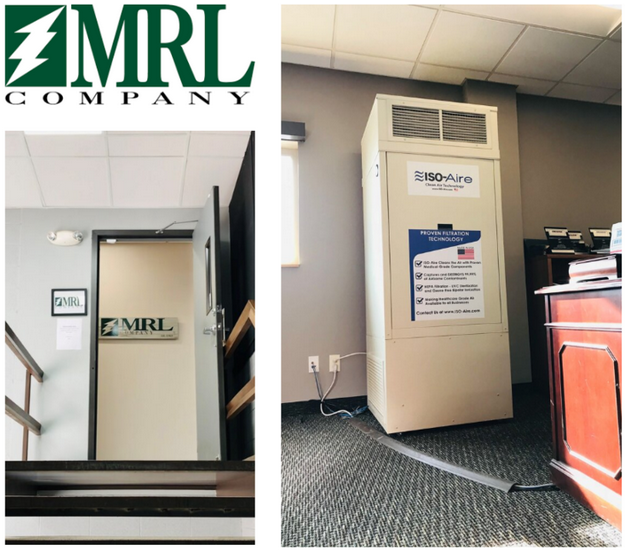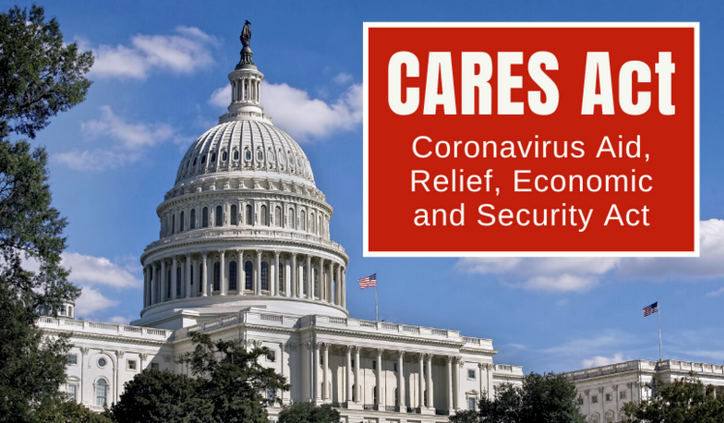While the next evolution of ISO-Aire clean air technology solutions feature a compact design, the powerful medical-grade filtration components housed inside continue to offer peace of mind for business owners, school administrators, facility managers, and now home owners. Two right-sized recirculating ISO-Aire 750 CFM models for mid- to smaller-spaces include the RSF750 floor model and the RSP750 portable filtration system on wheels, which allow for easy and convenient maneuverability. In addition, the new RSR residential offering delivers clean, purified indoor air throughout a living space and can be efficiently installed into a home HVAC system.
Similar to the innovative ISO-Aire models launched last June, all three new products feature proven HEPA (High-efficiency particular air) filters paired with optional ozone-free bipolar ionization and/or UVC sterilization. Together – in a proactive offense-and-defense, clean air strategy – the combination improves air quality by helping to remove and destroy 99.99% of airborne particles such as viruses, bacteria, mold, smoke, and pollen. “Created originally for hospital applications, ISO-Aire became a competitive choice for the commercial market safeguarding restaurants, child-care centers, schools, hair salons, and fitness studios. We’ve listened to our customers and are proud to deliver new, nimble solutions that do not compromise on ISO-Aire’s unmatched level of protection,” explained Chuck Albers, owner of St. Paul-based Ducts & Cleats and lead developer of ISO-Aire. “Teachers and child-care center owners expressed a need for a portable, compact unit that could purify the air in separate classrooms throughout the day. And we know schools are seeking medical-grade filtration for nurse offices or in smaller spaces to simulate an isolation room environment.”
Albers confirmed the 750 CFM units fit through a standard doorframe and may be transported and easily installed in a variety of building spaces. The concept for the RSR model also came at the request of consumers who experienced the pure indoor air filtered by three ISO-Aire units at Joseph’s Grill in St. Paul, Minn. Albers was approached about creating a residential version, and he and his team engineered an effective in-home solution. Connecting the powerful RSR series to an existing HVAC system enables homeowners or small businesses to maximize their indoor air quality with medical-grade air filtration and continuously remove airborne particulates, a tangible health benefit for those suffering with allergens and asthma.
ISO-Aire New Product Specs
ISO-Aire 750 CFM model features are highlighted below. For a complete product overview, visit the ISO-Aire products page. RSF750 and RSP750 floor set and portable models include HEPA filtration (99.97% to .3 microns), bipolar ionization and/or UVC sterilization to help capture and destroy 99.99% of airborne contaminants. The 750 CFM models utilize the same proven technology found in ISO-Aire 1,000 CFM models in a quiet and compact design. In addition, the RSP750 portable unit includes rugged casters and a handle for seamless mobility.
All ISO-Aire models can be plugged into a standard electrical outlet for easy installation. RSR1000 Residential unit features the same powerful medical-grade technology and unmatched protection as ISO-Aire commercial units but is designed to connect to a home’s furnace and HVAC system. Featuring 1,000 CFM and HEPA filtration, ozone-free bipolar ionization, and/or UVC sterilization, RSR1000 removes 99.99% of contaminants and air pollutants and delivers purified air throughout the home. The model protects from microscopic viruses, bacteria, mold, pollen, pet dander, dust, and other contaminants, offering relief for those with respiratory conditions. Also available, the RSR500, is ideal for homes, dorms or other living spaces without existing ductwork or ventilation systems.
How HEPA and Bipolar Ionization Clean the Air
Together proven bipolar ionization and HEPA filtration reduce potentially harmful airborne particulates invisible to the human eye, such as Coronavirus particles measuring 0.1-0.12 microns in diameter. The dual technology adds a layer of protection, and Albers notes it aligns with ASHRAE’s latest guidance on indoor air quality in schools that recommends supplemental use of HEPA filtration unit paired with bipolar ionization and/or UVC sterilization. “Inside ISO-Aire, ozone-free ionization serves as the offense, and a HEPA plays defense, helping to capture 99.99% of airborne contaminants,” Albers explained. “Our powerful fan recirculates and purifies the air, returning it into the building environment to safeguard occupants.
These recirculating units can operate 24/7 to continuously capture potentially dangerous particulates and microscopic pathogens as well as dust, dander and pollen.” Albers and his team originally developed ISO-Aire at their St. Paul facility in early 2020 at the request of one of Minnesota’s leading healthcare facilities in response to COVID-19 to ensure a secure and safe environment for patients and employees, particularly in negative pressure hospital isolation rooms. Realizing the technology could be adapted for commercial use, they redesigned the unit to accommodate a variety of building environments, such as schools, office settings, child-care centers, restaurants, hair salons, churches, and fitness studios. Emerging evidence and recommendations by public health officials and scientists is urging leaders to invest in further research to understand how COVID-19 may be transmitted by airborne particles. Albers noted, one of the most important safeguards during the pandemic is protecting the indoor air quality and removing any trace of harmful contaminants to protect one another. For more details on model specifications, pricing, and to determine which ISO-Aire unit is the appropriate solution for your school, home or business, please email us at info@ductsandcleats.com, or call 651-265-0605.
About ISO-Aire
The inner workings of the patent-pending ISO-Aire include reliable and proven filtration components that help to eliminate 99.99% of potentially harmful airborne contaminants. ISO-Aire includes a HEPA (High-efficiency Particulate Air), bipolar ionization and/or UVC sterilization. ISO-Aire continues to expand its presence in a variety of applications across the U.S. where clean, filtered indoor air is essential, such as senior living centers, hospitals, child-care centers, restaurants, fitness studios, hair salons, and now homes. Learn more at www.ductsandcleats.com and www.ISO-Aire.com. Follow us on Facebook, LinkedIn, YouTube and Twitter.



































